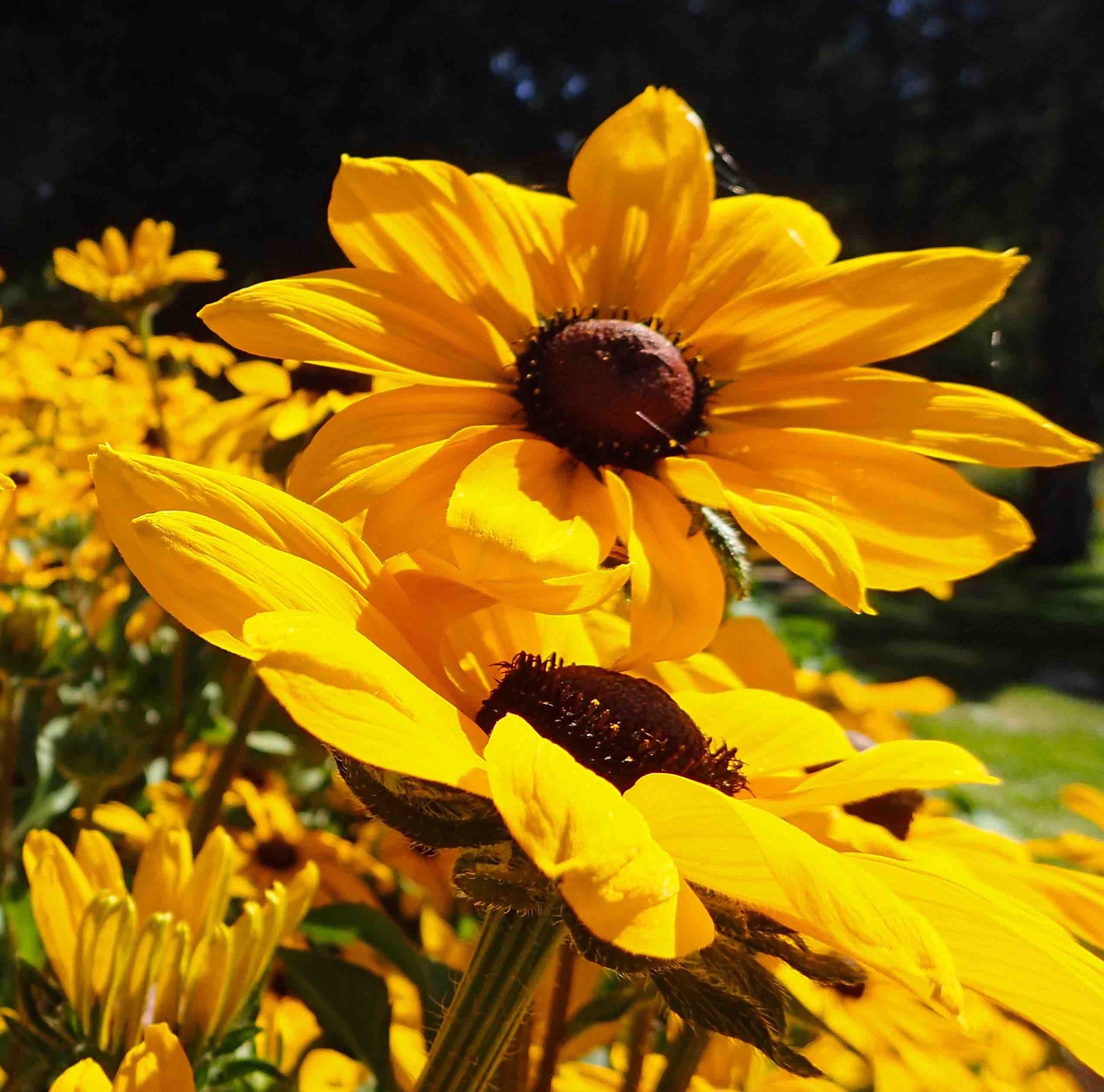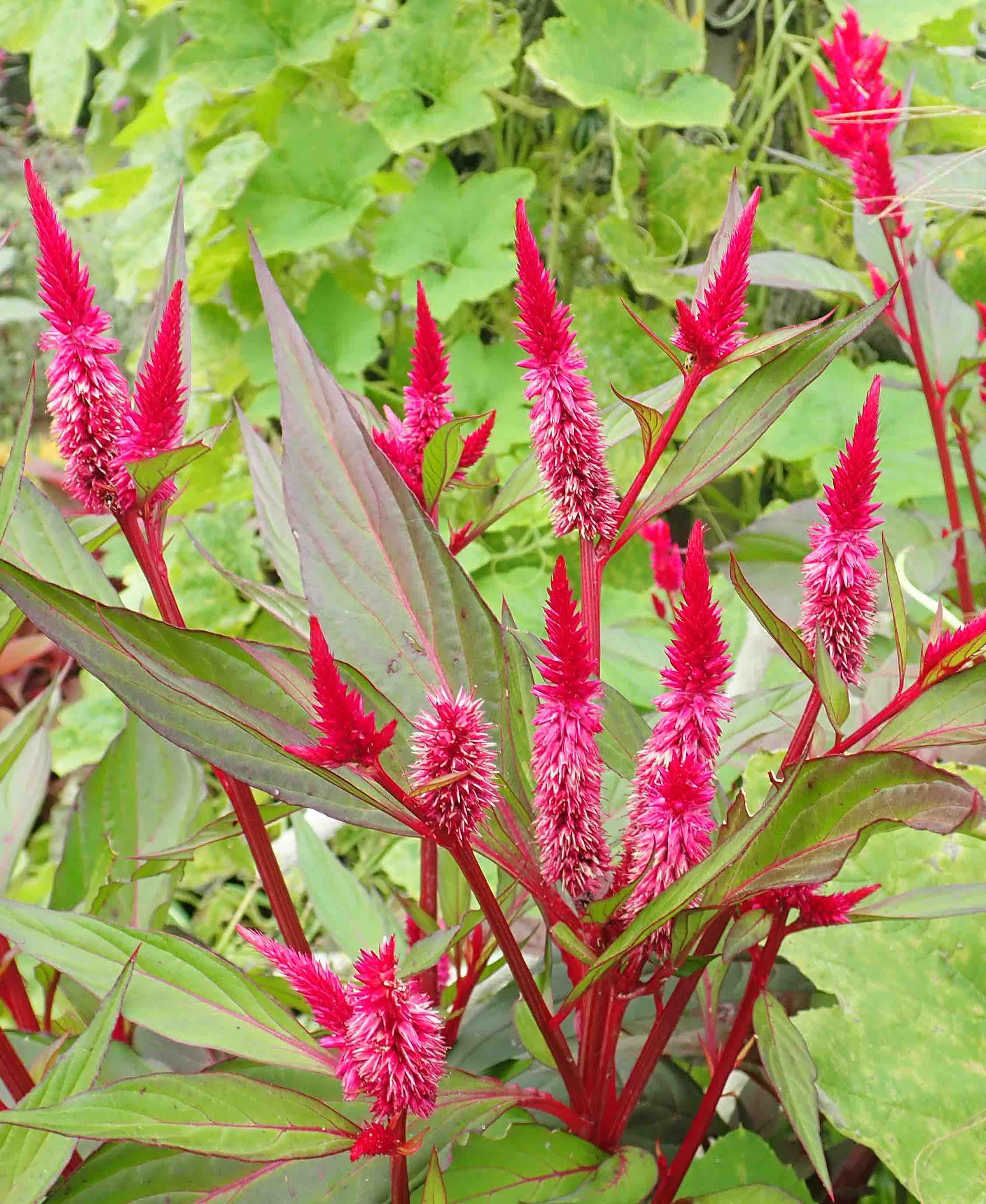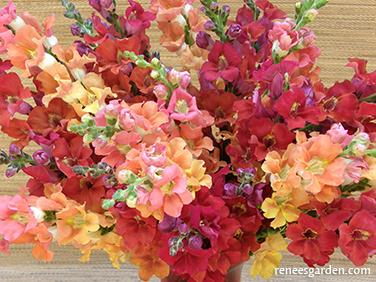Annual Flowers For Your Cutting Garden
Cutting a bouquet for the dining room table can feel like the ultimate in gracious living. And this pleasure is so easily attainable; some of the best cutting flowers can be grown from seed sown directly in your garden soil. Here are a few great choices for cutting, and some tips for a successful cutting garden.
Amaranth
Amaranth can be a dramatic accent in the vase, and an interesting focal point in the garden. One of the most spectacular types is the heirloom known as “Love Lies Bleeding” (Amaranthus caudatus), which is available in traditional red, and in a go-with-anything light green. Amaranths of all kinds thrive in the heat. Sow seeds directly in the soil after danger of frost has passed, and give them plenty of space. Love Lies Bleeding can grow to 4 feet in height by summer’s end!
Tip: Stake tall cutting flowers, such as amaranth, cosmos, tall zinnias, and sunflowers, early in the season when they are about two feet in height.
bells of ireland
Bells of Ireland produce spires of lime green bells that freshen up any combination of colorful flowers. Alone in a vase, their uniquely structural form is interesting and lively. They also dry well! Sow the seeds in early spring in the bare spaces in your garden, and enjoy the results. They require very little care.
Black-eyed Susan (Rudbeckia hirta) is a short-lived perennial, USDA Zone 5-9, easily grown from seed, and a classic cutting flower. Sow the seeds in spring, and they will often bloom that same year. If your season is short, however, they will return the following year and provide a summer of colorful blooms. The flowers attract small native bees.
Tip: Don’t be too quick to remove cutting flowers in fall. Many, including black-eyed Susans, cosmos, and sunflowers, provide winter food for birds.
Celosia is a relative of amaranth, and equally dramatic in a vase. Feather celosia (Celosia spicata), in particular, makes a colorful and versatile accent. Sow the seeds directly in the garden after danger of frost. The sturdy plants stand over 2 feet tall, and attract butterflies and other pollinators.
From left: Black Eyed Susan, Celosia, Cosmos
Cosmos, depending on the variety you choose, can grow from 18 to 60 inches in height. Sow seed after danger of frost has passed, and be sure to stake taller varieties of garden cosmos (Cosmos bipinnatus), as they are apt to come crashing down in late summer rains. The delicate foliage, as well as the showy flowers, fill out a mixed arrangement nicely. All types attract pollinators.
gromphrena
Gomphrena, a.k.a. Globe Amaranth, is a classic drying and cutting flower. You’ll find this cheery clover lookalike in shades of pink, purple, red, or white, in plant sizes that range from 8 inches to nearly 3 feet. Varieties that grow to 18 inches or taller are best for cutting purposes. They plants can take time to develop, so if your season is short, start the seeds indoors about 6 weeks before the last frost.
Love-in-a-Mist produces beautiful but fleeting flowers. It’s the seedpods that provide lasting interest. Sow seeds directly in the soil in early spring, as the plants thrive in the cool weather. Enjoy the delicate blooms and cut the pods for arrangements while they are still green. Leave a few in the garden and they will self-sow liberally.
Snapdragons grow well in the cool spring weather, and often persist in the garden for most of the summer, sometimes even returning for a second spring. It’s best to start the seeds indoors at least 8 weeks before the last frost, planting the seedlings outdoors after the last heavy frost. If you cut the flowers when just the bottom flowers are open, they will last more than a week in a vase.
From Left: Love-In-A-Mist, Snapdragons, Sunflower
Sunflowers have changed a lot in recent years, due to the efforts of breeders. Some are single-stem, others are branching; some diminutive, others towering. And the colors range from almost white to nearly black. One thing has not changed: all types are highly attractive to bees and many other pollinators. Although any sunflowers look cheery in a vase, those with multiple branching stems and flowers will give you more for your money. There are also pollen-free varieties that will not make a mess on your table. Sow the seeds directly in the garden in late spring. To get the most longevity in the vase, cut sunflowers just as they begin to open.
zinnias
Zinnias are without a doubt the most loved of all cutting flowers. Sow the seeds directly in the garden after danger of frost. Prevent diseases by thinning the seedlings when they’re small so they stand 10 to 12 inches apart. For cutting, choose one of the taller varieties, and harvest the flowers often by cutting long stems—the more you cut, the more the plants will branch and produce blooms! If you have a long growing season, do a second sowing in mid summer for fresh blooms that will attract butterflies and other pollinators to your garden for an extended period.










